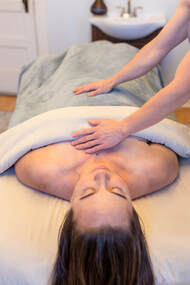Continuum Healing Arts
An exploration of the interconnectedness of earth, energy, and spirit. |
An exploration of the interconnectedness of earth, energy, and spirit. |
|
1/29/2024 0 Comments What is Integrative Massage Massage therapy encompasses a variety of techniques, each with its own unique benefits. Clients requesting a specific style of work will most often reference Swedish massage or Deep Tissue massage. Some are familiar with Trigger Point therapy, Rolfing, or Thai massage. When I am trying to get a better understanding of someone’s preferences, I will usually ask whether they lean more towards one of 3 categories. 1. General relaxation massage is targeted towards unwinding stress, relieving emotional tension, or for deep rest. 2. Clinical or therapeutic massage addresses specific focus areas with the goal of gaining better function or range of motion, pain reduction, or injury recovery. 3. Integrative massage blends a variety of techniques in an approach intended to be both deeply relaxing and aiming to create productive change through targeted work. Massage for relaxation will have a more rhythmic, flowing, trancelike quality that encourages the mind and body to find a state of deep rest. When accessing the parasympathetic state, the body is in a rest and repair mode. In this place of calm, our perceptual field is broadened, encouraging creative process and intuition. In the theta state of brainwaves, you may experience a dreamlike awareness or altered state of consciousness. In these sessions I may include Shiatsu style acupressure, abdominal massage, extra attention to hands, feet, and scalp, aromatherapy and energy holds. A clinical session will look more like a sports massage. Techniques are directly aimed at creating change in the tissues. Slow deep tissue work, trigger point release, friction and percussion, deep stretches, and incorporating tools like gua sha, cupping, and warming salves. You may experience notable shifts in your body which could include muscle soreness and take a day or 2 of recovery time. Integrative massage employs a wide variety of techniques designed to create effective change in the tissues while also incorporating somatic elements that call the client into a more whole sense of self. In addition to the typical flowing effleurage and targeted trigger point release, I may also utilize myofascial contact, passive stretching, acupressure points, and energy holds. The flow of the session might shift between deep relaxation and active techniques that engage communication with the client. With this approach, every session is unique and designed to address your individual needs at the time. Regardless of your needs and preferences, my goal is to meet each client with a curious and adaptive approach that opens space for healing release and embodied awareness. I emphasize the value of communication and creating a safe container for you to relax, get comfortable, and listen compassionately to what your body is needing in the moment.
0 Comments
|
Author: Cassidy L WalpoleLicensed Massage Therapist practicing in Asheville, NC. ArchivesCategories |